Raw diet or BARF for cats – Example, benefits and tips
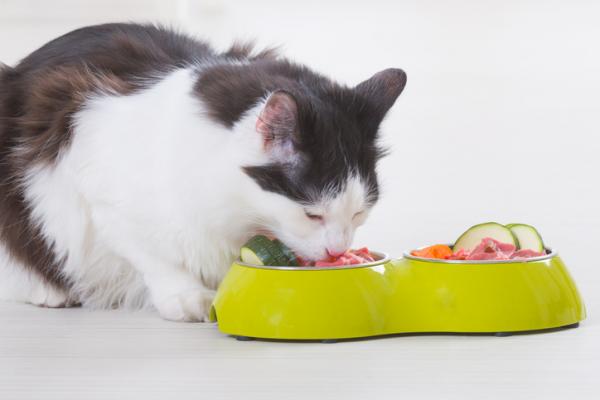
If you have a cat at home, you will know how much you enjoy eating. Just listen to your bag of food or sniff the can of wet food, your pussycat goes crazy and does not leave you alone until you see the food on your plate.
Now, have you ever considered giving your cat a natural diet, based on raw foods and free of flours, chemicals and dyes? Maybe it sounds crazy to you or you do not find the reason to do this, that’s why we want to talk about the BARF diet for cats.
For years now, this diet has become very popular among cat owners, especially among those whose cats are prohibited from eating processed foods for different reasons, or those who choose to feed their pets. animals with a natural diet. Discover what it is about!
The origins of the BARF diet in cats
The name of the BARF diet has two meanings: Bones and Raw Food, which means “bones and raw food”, and Biologically Apropiate Raw Food, which is the name given to this diet in Spanish, abbreviated ACBA, which means “Raw Food Biologically Appropriate.”
This type of food was implemented by Ian Billinghurst in 1993, although the name BARF is due to Debbie Trip.
The idea of this diet is that the cat can have food as similar as it would have in the wild, based on raw meat, bones, organ meats and a small portion of raw vegetables.
It is assumed that by feeding in this way the cat will have all the nutrients it needs to be healthy, in addition to avoiding harmful effects that processed foods can bring, for the amount of chemicals and flours that they bring, since they can cause diseases, allergies and even generate obesity.
After Billinghurst published his theory, many veterinarians, researchers and, with the passage of time, protectionists and defenders of the organic way of life, have chosen to feed their cats with this type of diet, promoting and spreading this natural way of giving to eat animals as the most appropriate and natural.
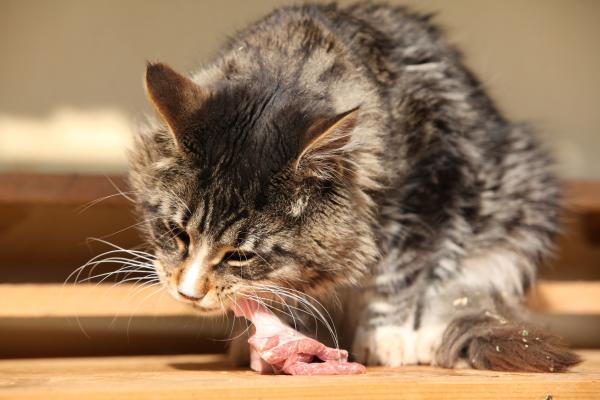
Why is the BARF diet defended?
The philosophy that follows this type of diet appeals to the fact that, in spite of all the adaptation process by which the cats passed to become a domesticated species, the structure of their organism remains the same, so the digestive system processes the protein better, that is to say the meat, that the carbohydrates, component that the processed food contains in excess.
Apart, the chemicals and the fat that contains processed food can cause diseases in some cats, such as pancreatitis and kidney stones, for example, which is why more natural recipes are recommended, so the BARF diet becomes an excellent option in these cases.
How to make a BARF diet for a cat?
Between sixty and eighty percent of the food must be composed of raw meat, either chicken or turkey, with wings, neck, and so on. Just a ten percent of vegetables raw grated, such as carrots, celery, zucchini and some fruits, and even cooked zucchini, foods that cats enjoy a lot. Remember that it is important to review which fruits and vegetables are recommended for cats to avoid possible poisoning.
In addition, it is necessary to add between fifteen and twenty percent of lamb, duck or rabbit meat, for example, a couple of times per week; fish and viscera (heart, liver, kidney, among others) once a week; about five eggs a week, and maybe some extra vitamin supplements. Among the supplements is necessary taurine, an essential component of the cat’s diet, which must be consumed daily. Taurine can be ingested by eating heart, or with supplements.
The idea is Mix all the ingredients without cooking, and provide the adult cat about two portions a day, and the puppy around four.
Avoid raw pork meat, cruciferous and excess starches, flours and cereals. The fish must be refrigerated before preparing the food, to kill possible bacteria. If you want, it is possible to take the same measure with the rest of the protein. If bones are added, make them with some meat, and always raw, because when they are cooked they can splinter and drown the animal.
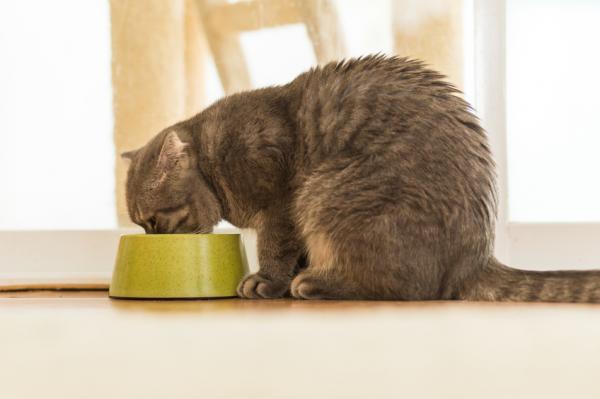
Example of BARF diet for cats
If you are interested in starting to feed your cat with the BARF method, here is an example of how to identify the portions:
- 1 / 2 kilo of chicken meat or turkey, between breast, wings, neck, etc.
- 400 grams of heart, whether beef, chicken or lamb
- 200 grams of chicken liver
- 300 grams of grated vegetables (zucchini, carrot and pumpkin)
- 1 egg
- Fish oil
Preparation of the BARF diet:
Chop the meat and bones very well, either at home or when cut. Place in a container and add the heart, vegetables and egg. Mix very well integrated ingredients to the meat. Add some fish oil, source of omega 3, according to the weight of your cat. You can use, for example, salmon oil.
Separate in portions with plastic wrap and store in the freezer. Since the night before, begin to thaw the portions you need the next day, to serve your cat at room temperature.
The idea is that you can vary the ingredients. Once a week, instead of using liver, add fish; when you do not have a heart, add taurine in supplements; alternate the vegetables you use.
If you prefer to add taurine as a supplement, you can add it directly to the portion at the time your cat is going to eat it, to avoid that the components are “oxidized” and it is easier to calculate the appropriate amount according to the weight of the animal.
You must not use no seasoning, no salt, no oil, sauces or something similar, no garlic, chives, garlic or onion. Your cat does not need this, and they can be toxic to him or produce an allergy.
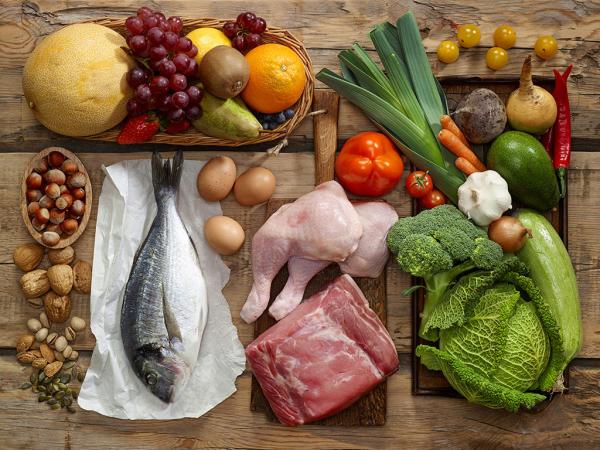
Benefits of the BARF diet
There many benefits of the BARF diet for cats that you should assess if you are thinking about modifying your eating habits:
- You will provide your cat with a natural diet, similar to that of wild cats, with the necessary nutrients in sufficient quantities (protein, taurine, fats, vitamins and amino acids), and without the harmful effects that processed food can bring, due to chemicals, preservatives and high proportions of flour and cereals.
- You will avoid problems of overweight, obesity and lethargy.
- The fur will be brighter,
- The joints will be healthier, avoiding diseases.
- Without carbohydrates, the stool will not have a bad smell.
- The cat will recover its active attitude.
- Raw food has large amounts of water, so it will reduce fluid intake.
If you are interested in introducing your cat to the BARF diet, consult with your veterinarian about the portions and supplements required according to their weight and the needs of the animal. Twice a year he performs stool tests to rule out the presence of parasites, although with proper refrigeration and regular deworming this should not occur.
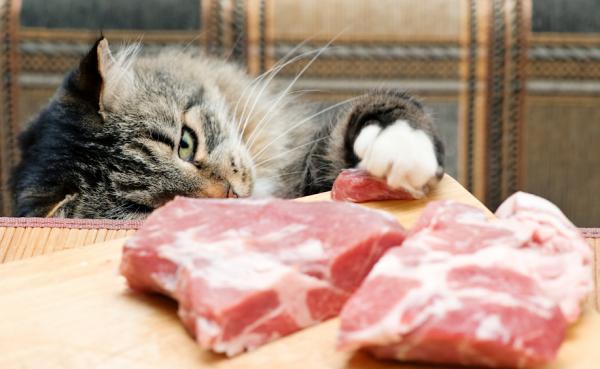
If you want to read more articles similar to Raw diet or BARF for cats – Example, benefits and tips, we recommend that you enter in our section of Homemade Diets.


